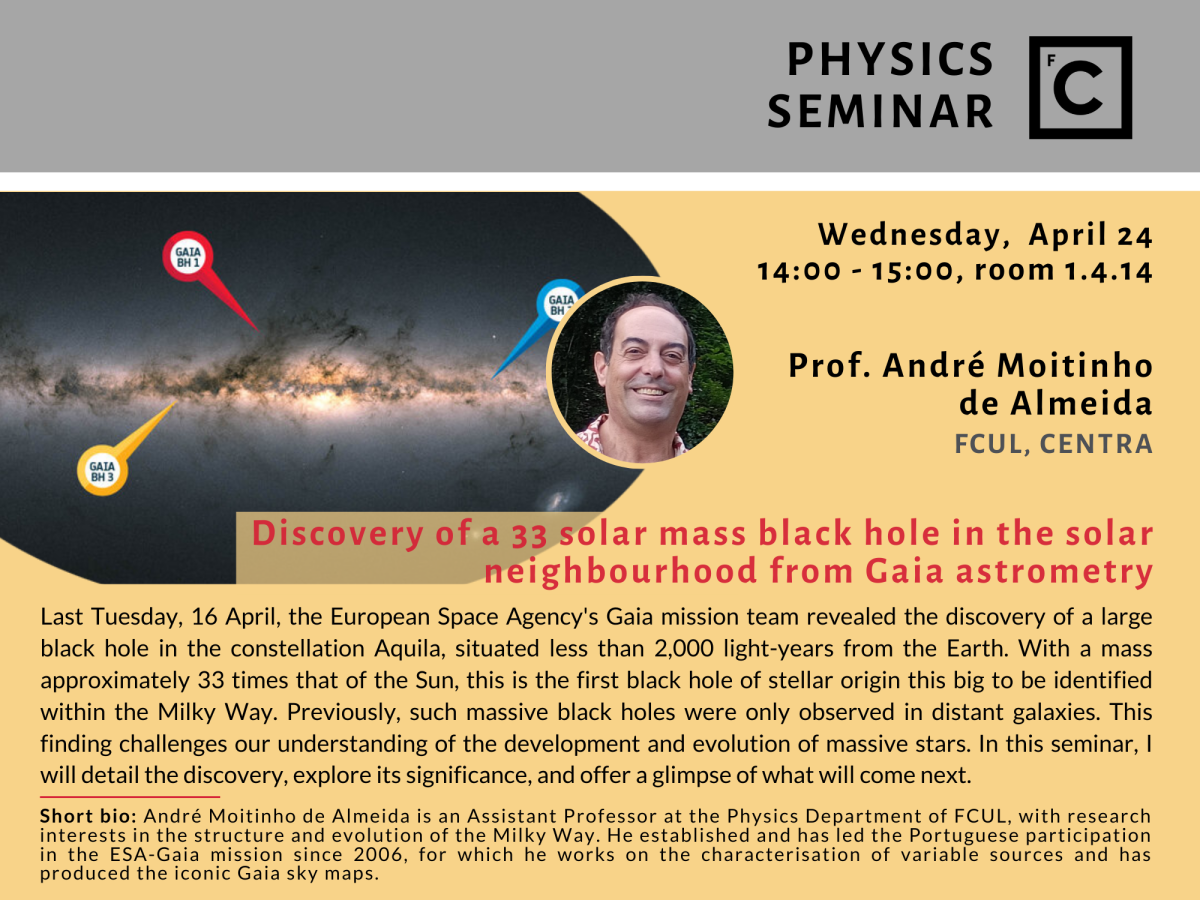Por André Moitinho de Almeida (Center for Astrophysics and Gravitation, FCUL).
Last Tuesday, 16 April, the European Space Agency's Gaia mission team revealed the discovery of a large black hole in the constellation Aquila, situated less than 2,000 light-years from the Earth. With a mass approximately 33 times that of the Sun, this is the first black hole of stellar origin this big to be identified within the Milky Way. Previously, such massive black holes were only observed in distant galaxies. This finding challenges our understanding of the development and evolution of massive stars. In this seminar, I will detail the discovery, explore its significance, and offer a glimpse of what will come next.
Short Bio: André Moitinho de Almeida is an Assistant Professor at the Physics Department of FCUL, with research interests in the structure and evolution of the Milky Way. He established and has led the Portuguese participation in the ESA-Gaia mission since 2006, for which he works on the characterisation of variable sources and has produced the iconic Gaia sky maps.





